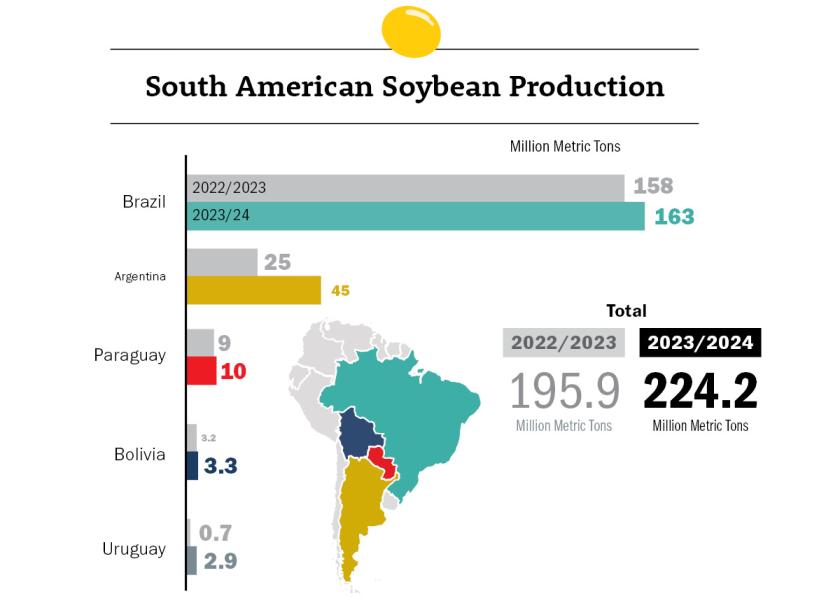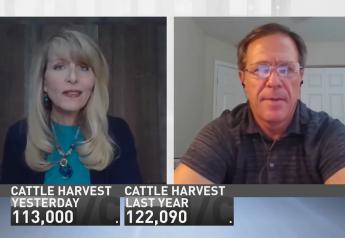Brazilian Farmers Still have 30% of Their Soybeans to Plant

Consistently hot, dry weather conditions are parked over parts of central Brazil, including in key soybean growing areas such as the state of Mato Grosso. Meterologist Kirk Hinz with BAMWX.com says he expects more of the same in the days ahead.
“For the major soybean-growing areas in Brazil we have been seeing significantly above-normal temperatures – we’re talking 95- to 105-plus degrees in those areas – and only 25% to 30% of normal rainfall,” Hinz told Chip Flory, AgriTalk Host, on Tuesday. “These weather patterns we’re talking about – too little moisture and too much heat – have been going on for over a month and a half now.”
Hinz predicts some parts of central Brazil will see scattered rainfall in only fractions of inches between now and Saturday. He doesn’t expect the limited amounts to provide sufficient relief for farmers there who are in the process of planting soybeans.
“These are areas that used to be forested. They tend to be sandy soils that don’t retain moisture,” Hinz explains. “You can get an inch of rain one night and go plant by noon the next day.”
Farmers Weigh Planting Second Corn Crop
Flory notes that approximately 70% of the Brazilian soybean crop is planted, a result of the uneven rainfall and increasingly dry conditions in central parts of the country.
With 30% still to go, he believes many farmers concerned about the lack of moisture will finish soybeans but possibly forgo planting their second corn crop, what farmers there call the safrinha crop.
“There’s no doubt this lack of moisture is affecting the potential for the safrinha crop,” Hinz agrees.
While fields in central Brazil are dry, parts of southern Brazil are swimming in too much moisture. States including Paraná, Santa Catarina and Rio Grande do Sulare have received between 20” and 30” of rain in the past month to 40 days, Hinz reports.
“That’s an incredible amount of rain, and the effect on crops has been significant,” he says. “The rains are contributing to widespread planting delays and replanting.”
Argentina Rebounds From 2022
The bright spot for corn and soybeans in South America this year looks to be Argentina. Recent rains there have eased drought conditions from 2022 in the country’s row crop-growing regions.
With longer-term forecasts calling for more rainfall, a result of an El Niño weather pattern, Hinz says the country’s corn and soybean production will likely rebound from last year.
The U.S. Department of Agriculture's October monthly supply and demand report forecasts South American soybean production for 2023-24 totalling 221 million tonnes. That would be up from last year's 190 million, which was depressed by the La Niña drought in Argentina, which cut its soybean crop in half.
The U.S. Climate Prediction Center forecasts an 88% chance that El Niño conditions will continue in Argentina through at least May 2024.
However, for Argentina’s wheat crop, which is currently being harvested, easing drought conditions came too late. The USDA recently cut its estimate for Argentina’s wheat harvest, though production is still expected to top last year’s output.
How Should You Market Extra Bushels in a Possible South American Weather Market?
4 Reasons Why You Should Care About South America
El Nino's Effect on Crop Prices
The South America weather discussion between Hinz and Flory on AgriTalk is available here:







